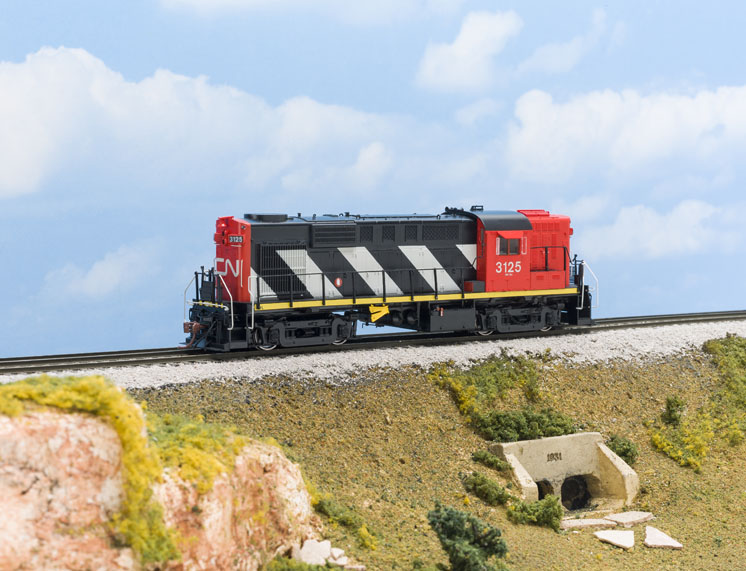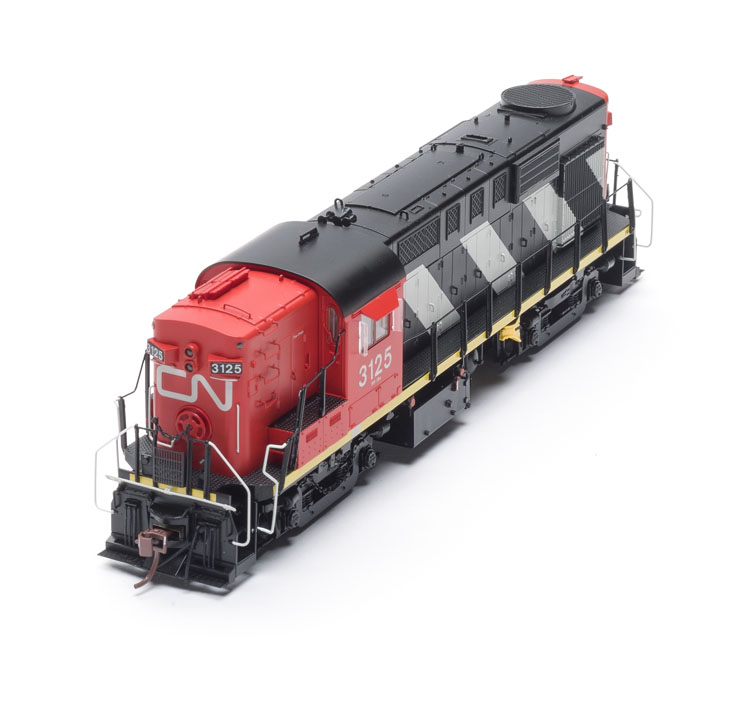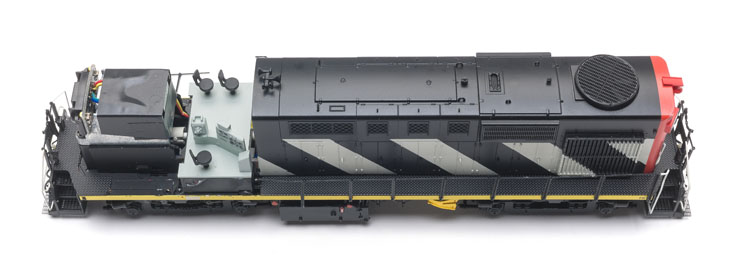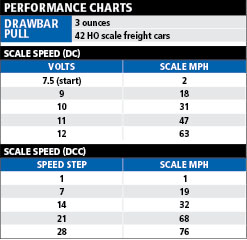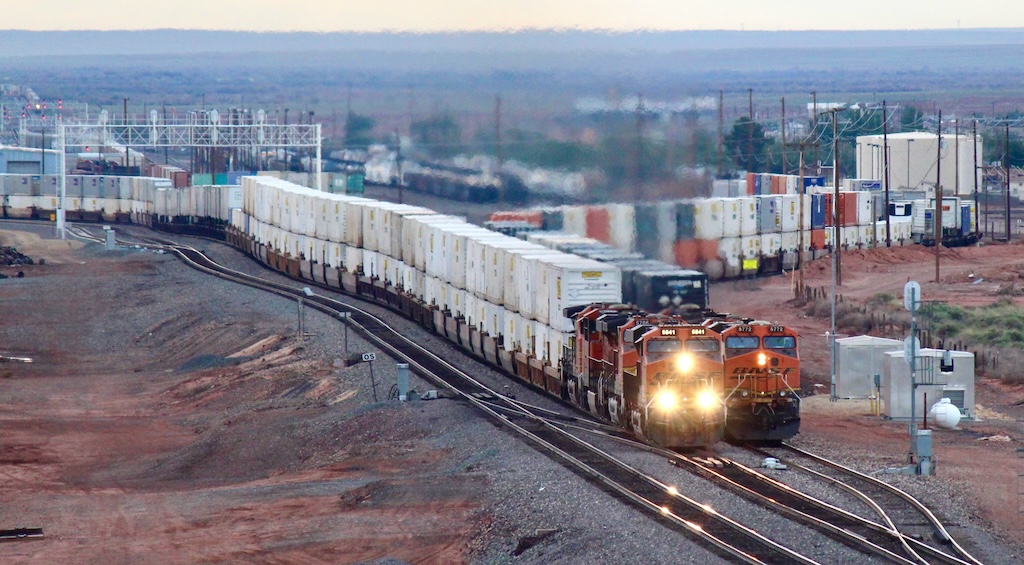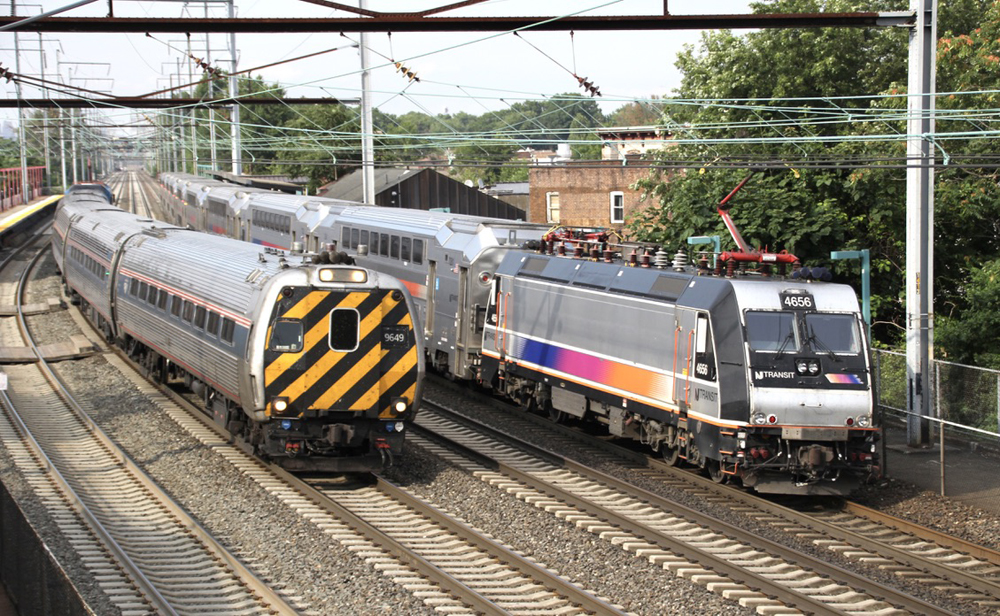For the first time in plastic an accurate, roadname- and roadnumber-specific version of a Montreal Locomotive Works (MLW) RS-18 is available as a ready-to-run, HO scale plastic model. The Canadian road switcher is available with a factory-installed LokSound 5 dual-mode decoder, featuring sound files recorded from existing prototypes.
The prototype. Built by Alco subsidiary MLW, the RS-18 was a Canadian version of the Alco RS-11. Both locomotives featured 12-cylinder 251B diesel engines rated at 1,800 hp. The main spotting feature between the two locomotives is that the hoods of the RS-18 don’t have the notched corners of their Alco counterpart.
Between 1956 and 1968, MLW built 351 RS-18s for eight Canadian railroads. Canadian National Ry. had the largest fleet at 225 units. Canadian Pacific Ry. and Pacific Great Eastern/BC Rail rostered the second and third largest fleets of RS-18s. Most RS-18s were out of service by the 21st century.
The model. According to Rapido, the model was designed from 3-D scans of existing prototypes. The HO RS-18 definitely captures the prototype’s unique contours, especially at the corners of the hoods. The model’s dimensions also match a prototype builder’s diagram.
Classed MR-18a to MR-18g, the CN RS-18s were delivered between 1956 and 1960. Our review sample models CN no. 3125, which was one of 30 units designated MR-18e delivered in 1959. These units were geared for 80 mph and featured pass-through piping so they could be used with steam-generator cars in passenger service. These units also had their dynamic brakes installed in the short hood, which can be identified by the louvers on the short hood’s left side (with the locomotive’s long hood facing forward).
Rapido included all these details and more in its exquisite model. Grills and access doors are well defined in the injection-molded plastic body shell. Separate detail parts abound, including metal handrails in plastic stanchions, etched-metal steps, and radiator grill with fan detail underneath. The firm has also produced all the different truck, fuel tank, and other detail variations of the RS-18 as appropriate for each road name.
Our review sample accurately models no. 3125 as it appeared in the 1980s. The locomotive was originally built as a “lightweight” version with transverse fuel and air tanks, riding on 8′-10″ trucks. By the 1980s no. 3125 had been refitted with “heavyweight” AAR Type B trucks that had a 9′-4″ wheelbase and a prominent center leaf spring, as depicted on the Rapido model. Our model even includes yellow rerailing frogs under the side sills.
The striped CN paint scheme features sharp color separation and accurately placed lettering that matches prototype photos. This includes the MR-18e designation under the road number and the FL on the sills at the end of the long hood, which designated that the unit ran long hood forward.
Taking things apart. After removing the handrails, I pressed the cab sides and carefully removed it from the frame. The cab interior is impressive with painted, separate seats for crew figures (not included) and a detailed control panel.
According to the instructions, removing the long hood to access the model’s mechanism is difficult and should be avoided. After removing the cab, the short hood, and handrails, the long hood can be removed by carefully disengaging the clips that hold it to the chassis. The clip locations are shown in the exploded view diagram in the instruction manual. It’s a tight fit and breaking one of the clips means that the shell won’t reseat properly during re-assembly.
Resting in the center of the die-cast metal frame, the model’s dual-flywheel-equipped can motor is connected to truck mounted gear boxes powering all four axles.
The main printed-circuit board is attached above the mechanism with the ESU LokSound decoder plugged into its 21-pin socket. The decoder is also connected to a well-enclosed smartphone-style flat speaker.
Note Rapido Trains produced a very useful step by step video showing how to remove the shells of its HO scale RS-11 and RS-18 models. WATCH THE VIDEO HERE.
Performance. On our DCC test track, the model crept along at 1 scale mph in speed step 1 and accelerated to a top speed of 76 scale mph. Its drawbar pull is equivalent to 42 free-rolling freight cars on straight and level track.
I pressed function 8 (F8), heard the 251 diesel engine rumble to life and saw the number boxes illuminate. Function 0 turned on the dimmable (F7) headlight. Pressing F11 turned the white class lights on and off.
Rapido really upped its lighting game with some additional effects on the RS-18. There are ground lights (F18) above the trucks under the cab. Remember the detailed cab interior noted above? The gauges on the control stand are actually backlit.
Other user-triggered functions include the Nathan M3H horn, bell, and a realistic dynamic brake sequence. All the functions can be remapped and every other aspect of the decoder can be adjusted using configuration variables (CVs). A full ESU decoder manual is available as a free download at loksound.com. I used the free LokProgrammer software and a LokProgrammer computer interface (MRSP $179.99) to program our review sample.
After adjusting our RS-18’s momentum and braking rates, I ran a freight around our Milwaukee, Racine & Troy layout. I enjoyed using DRIVE/HOLD (F9) to keep the speed constant while I used the throttle to notch the engine rpm. Pressing F10 triggers the brake.
The locomotive easily maneuvered through no. 5 and no. 6 turnouts. During our hill climb test, the RS-18 pulled 10 freight cars up a winding 3 percent grade without slipping.
On our DC test track, the engine’s sounds and lights started at 6V. At 7.5V, the model rolled smoothly at 2 scale mph and accelerated to 63 scale mph at 12V. On DC the sound effects are limited to engine rpm and squealing brakes unless an analog DC Controller, like a Model Rectifier Tech 6, is used.
For three decades RS-18s were a ubiquitous sight in eastern Canada. Kudos to Rapido for bringing this Canadian road switcher to HO scale.
Price: $335 (DCC sound), $225 (DC, no sound)
Manufacturer
Rapido Trains
500 Alden Road, Unit 21
Markham, ON L3R 5H5
rapidotrains.com
Era: 1956 to (late 1970s to early 1990s, as detailed and decorated)
Road names (multiple road numbers produced): Canadian National (stripes, green, Tempo, and “wet noodle” schemes), Canadian Pacific (block scheme and script scheme), CP Rail. Undecorated versions also available.
Features:
21-pin DCC socket
All-wheel drive and electrical pickup
Blackened metal wheels in gauge
Die-cast metal chassis
Dual-mode ESU LokSound 5 decoder
Light-emitting diode headlights, class lights, ground lights, and number boxes
Macdonald-Cartier knuckle couplers at correct height
Weight: 13.8 ounces





